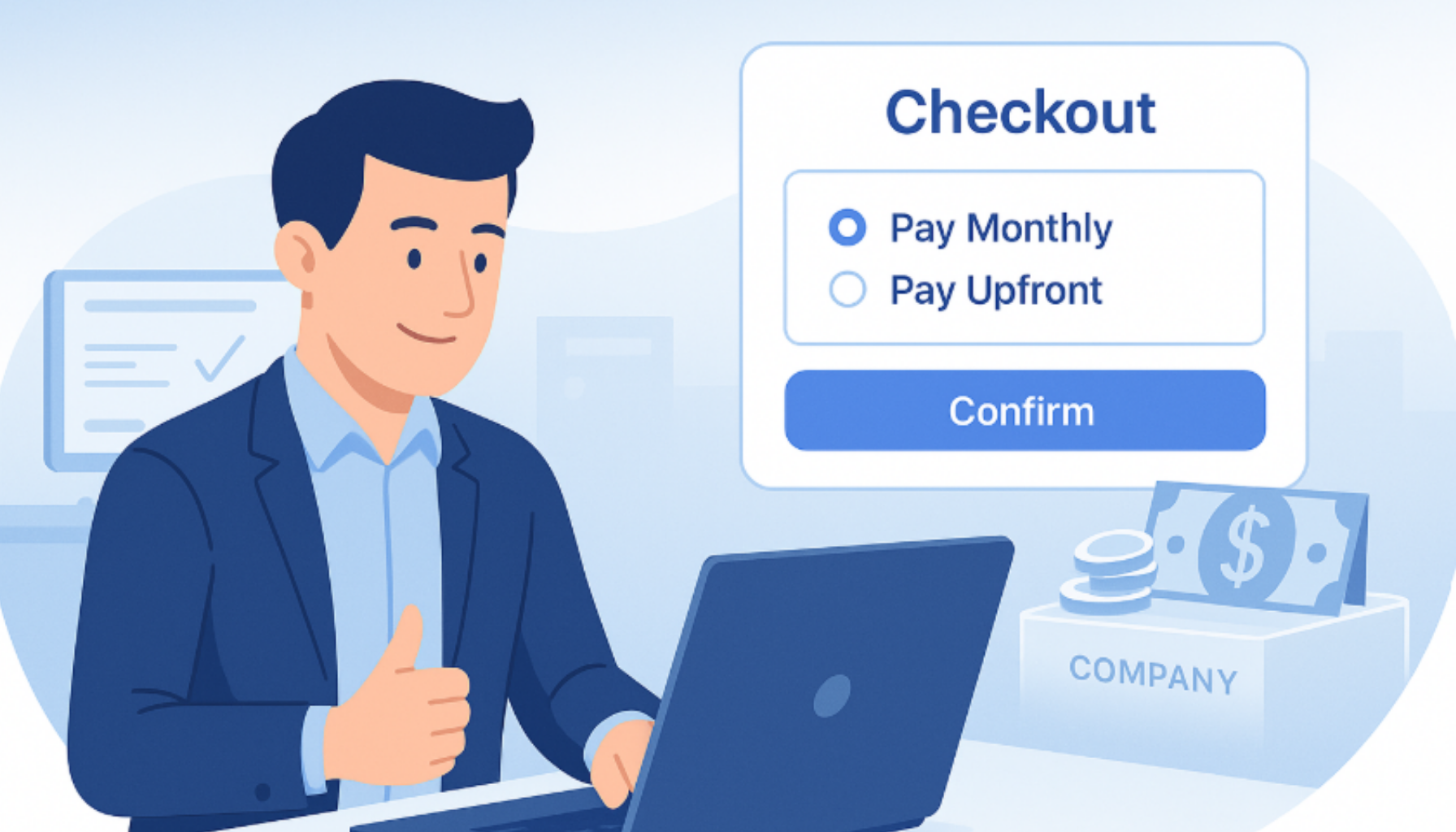Secret weapon for Tech companies to accelerate deals and improve cash flow
Have you ever lost a sale or been delayed because you required an annual payment up front?
Although it has long been the norm in consumer purchasing, payment plans and Buy Now, Pay Later (BNPL) options are becoming more common in B2B. They allow you to make the sale and create predictable cash flow as those recurring payments come in.
In fact, large enterprise software companies have been doing so via a number of financial vehicles that are not available to small businesses!
Why Customers Love Payment Flexibility
Customers negotiate for discounts on a purchase by paying up front. And most SaaS vendors are ready to offer that. The SaaS vendors collect the annual subscription payment, provide access to their services, and renew each year or every 3-5 years depending on the contract term.
However many customers, especially in the current economic environment, may not have the cash on hand to pay up front, or they may simply prefer to preserve their cash or manage their cash flow more conservatively by spreading the payments out over time even though the overall cost may be higher.
As a SaaS vendor you have your own cash flow requirements, hence why many SaaS companies are requiring annual upfront payment or are pushing for multi-year upfront payments.
Why SaaS Vendor Should Offer Payment Flexibility / Why Businesses Benefit from Payment Flexibility
When you offer payment plans and deferred payments, you can get the sales you may have lost or delayed if you only offered a one-size-fits-all payment option. You also reduce friction for the buyer when those payment options are baked into your sales process, rather than something that needs a manual review every time, with a dedicated solution like Ratio Boost for SaaS.
There are customers at every price point and for every potential payment plan. Payment flexibility makes sure you’re ready to serve all of them.
.png)
Many SaaS vendors experience boom and bust months. If most annual subscriptions come due in July, for example, that could mean that cash flow gets tight in spring, as few payments come in but outflows remain steady. Payment plans that spread subscriptions over time can make cash flow more predictable and steady, making it easier to run SaaS vendors.
A SaaS vendor using payment plans, similar to a BNPL, can get paid upfront while the buyer has flexibility to choose how to be billed / how to pay for the software. This can be done through the payment platform so SaaS vendors can continue to deliver a superior closing experience and access the contract values upfront.
How to Put That Secret Weapon to Work
As mentioned earlier in the blog, this financial vehicle is nothing new. Many Fortune 500 enterprises have had such flexibility for a long time to win deals. It’s just that smaller enterprises never were able to have access to such financial vehicles.
The traditional financial sector favors certain enterprises because of the perceived lower risk associated with large enterprises. Furthermore, there are a lot of special financial maneuvers that take place with multiple parties involved while still bringing sufficient financial benefits to all parties involved.
This is where Ratio comes in. Learn more about Ratio and how we aim to democratize a financial vehicle that had not been easily accessible to small companies.
Ratio provides a unique payment solution that allows you to receive the full subscription funds even though payments are deferred. The SaaS company can invest in the business without costly loans or constantly going after new VC funds, and you can quickly evaluate trade-offs using our funding comparison calculator. Furthermore, the SaaS vendor can use the value of ongoing payment plans to showcase your company’s stability while seeking other sources of capital infusion.
Contact us to learn more about Ratio and this secret weapon.









.png)


